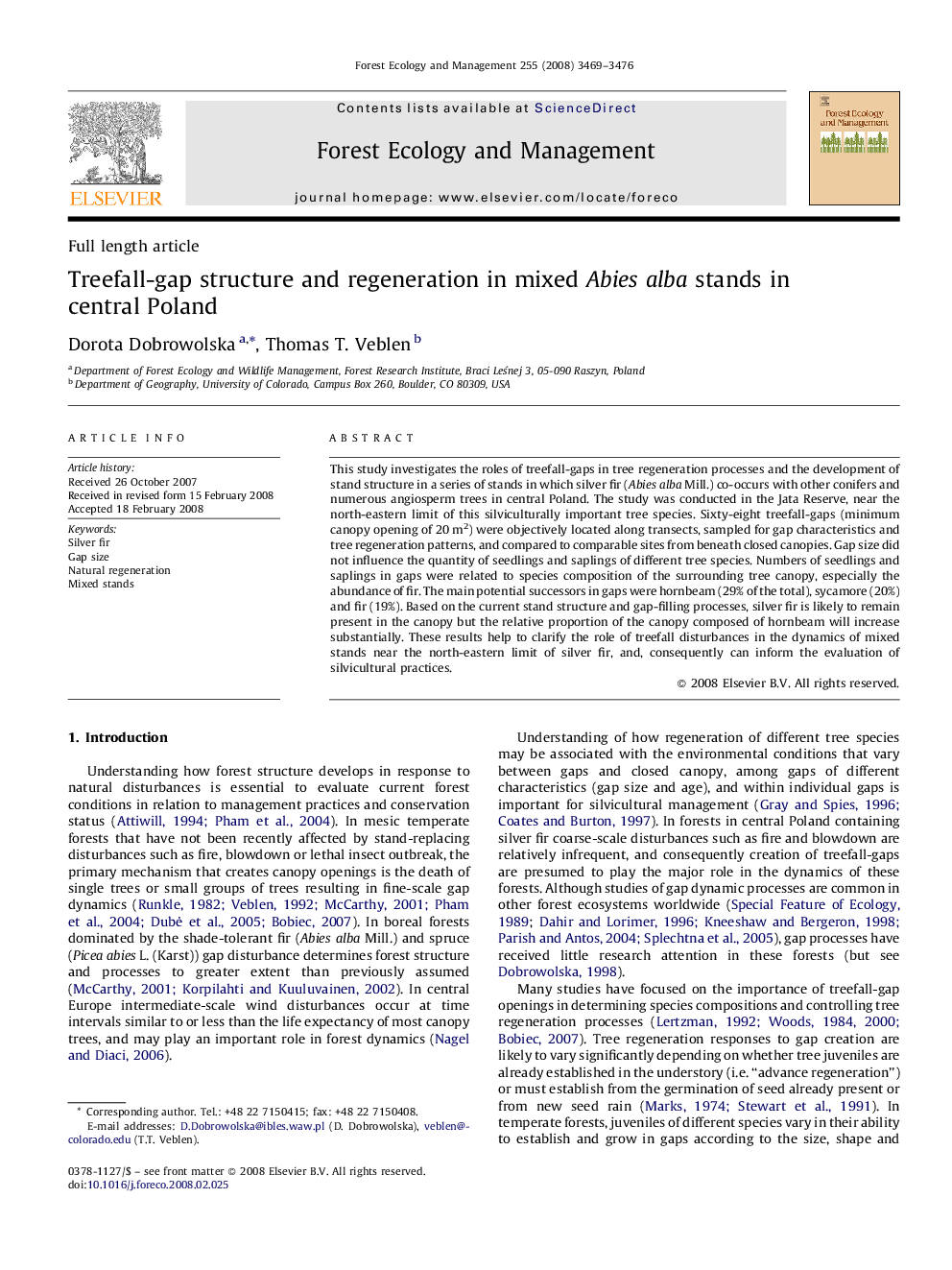| Article ID | Journal | Published Year | Pages | File Type |
|---|---|---|---|---|
| 89225 | Forest Ecology and Management | 2008 | 8 Pages |
This study investigates the roles of treefall-gaps in tree regeneration processes and the development of stand structure in a series of stands in which silver fir (Abies alba Mill.) co-occurs with other conifers and numerous angiosperm trees in central Poland. The study was conducted in the Jata Reserve, near the north-eastern limit of this silviculturally important tree species. Sixty-eight treefall-gaps (minimum canopy opening of 20 m2) were objectively located along transects, sampled for gap characteristics and tree regeneration patterns, and compared to comparable sites from beneath closed canopies. Gap size did not influence the quantity of seedlings and saplings of different tree species. Numbers of seedlings and saplings in gaps were related to species composition of the surrounding tree canopy, especially the abundance of fir. The main potential successors in gaps were hornbeam (29% of the total), sycamore (20%) and fir (19%). Based on the current stand structure and gap-filling processes, silver fir is likely to remain present in the canopy but the relative proportion of the canopy composed of hornbeam will increase substantially. These results help to clarify the role of treefall disturbances in the dynamics of mixed stands near the north-eastern limit of silver fir, and, consequently can inform the evaluation of silvicultural practices.
